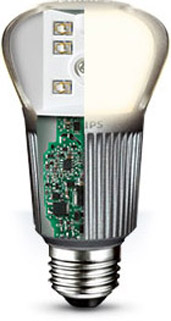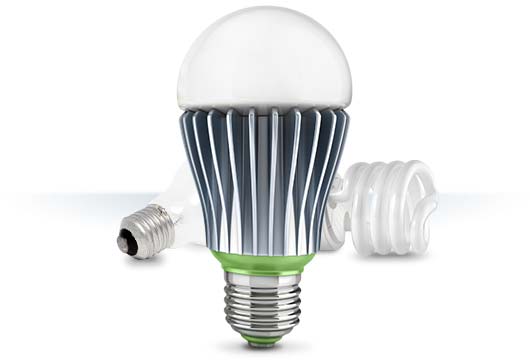
The Promise of Better Lighting
Lamps based on LEDs offer new sources of illumination in a wide array of innovative designs. They have the potential of greater energy efficiency, longer lifetimes, and exceptional control over the color and hue of the light they emit.

Efficiency Matters
All lamps currently in use—including fluorescent, incandescent, and LEDs—emit both heat and light. The challenge with each succeeding generation of lighting technology has been to produce more light and less heat while mimicking the visual effect of sunlight and creating other desired effects.
The standard incandescent light bulb still works mainly as Thomas Edison invented it, with only 5 to 10 percent of the electricity producing light. CFLs and LEDs are far more efficient, lowering electricity consumption and generating less heat.
Lumens per watt
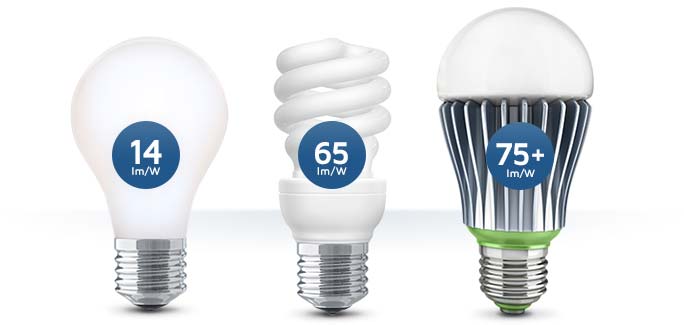
Lumens per watt (lm/W), a unit called “efficacy,” measures how efficiently a light source produces visible light. Lumens measure brightness, while watts measure the rate at which energy is used. The higher the “lumens per watt” (or “efficacy”) value, the more efficient the lamp—and the lower your energy bill.
More Concern for the Planet
Power plants generate the electricity we need to “keep the lights on.” In the United States, roughly half that electricity is generated by burning coal, a process that leads to smog, acid rain, and air pollution. But by consuming less electricity than incandescent bulbs, LEDs help reduce these harmful effects. Additionally, LEDs do not contain mercury, as CFLs do.
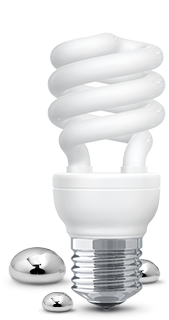
CFLs contain mercury, and the lamps should be disposed of properly.
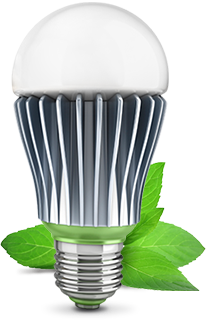
By consuming less energy, LEDs outperform CFLs and cause less damage to the environment.
Did You Know?
Lighting accounts for just under 20 percent of electricity use in the United States. In office buildings, lighting, heating, and air conditioning are typically the largest loads.
Decreasing Cost
The initial purchase price of CFLs and LEDs presents a barrier, but savvy consumers will consider the total cost of ownership: this includes the electricity needed to run the lamp and how long it will last before burning out.
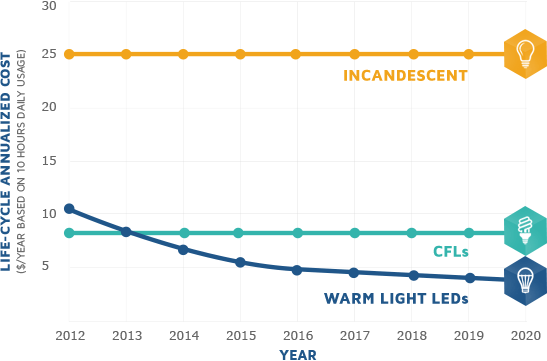
Did You Know?
When LED lamps debuted in 2008, consumers paid an average of $75 per bulb. In 2013, many LED lamps cost less than $15 per bulb.
A Short History of Electric Lighting
Throughout most of human history, artificial light was produced by fire—via torches, candles, and lamps fueled by whale oil, kerosene, and gas. But beginning in the late 19th century, the harnessing of electricity led to a revolution in lighting technology.
-

1879
Thomas Edison publicly unveils his light bulb on New Year’s Eve, 1879.
-

1939
Fluorescent lamps make their debut at the 1939 New York World’s Fair.
-

1968
First mass-production of red LEDs; used on circuit boards, calculators, and watches.
-

1990s
CFLs commercially available on a widespread basis.
-

2008
White LED lamps for general illumination become available to consumers.
-

2013
Organic LEDs (OLEDs) are in wide use in smartphone displays and in demonstration phase in lighting.
How It Works
The most prevalent type of LED lamp excites a coating on the outside of the bulb. The coating, known as a phosphor, absorbs the blue light from the LED and re-emits light at longer wavelengths. The phosphors are chosen so that the combination of the direct light from the LED and the light emitted from the phosphor will produce the desired white light.
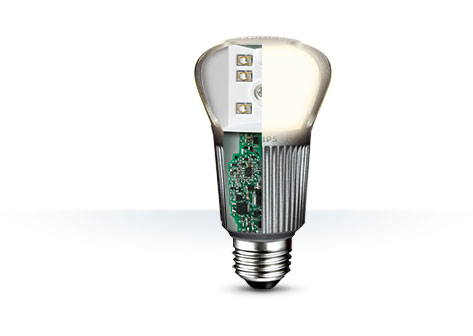
Did You Know?
The organic LED, or OLED, is a more recent entrant into lighting technology. Operating much like LEDs at the microscopic level, OLEDs can be fashioned into ultra-thin, flexible panels and promise to usher in a new era of innovative lighting designs.
